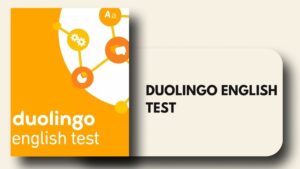The PTE assesses a test taker’s speaking and writing abilities in a combined section. The format and question types are structured to evaluate both skills together, making this part of the test longer than others. For better clarity, we’ve covered the PTE Academic writing section separately in this blog, highlighting its question types, format, scoring system, and preparation strategies.
Details about the PTE speaking section are shared in a dedicated in this blog separately, along with their question types, format, marking system, and preparation tips. We have elaborated on the PTE speaking section in another blog.
PTE Academic Writing Section: An Overview
- The PTE Academic exam features between 53 to 74 questions, spread across 20 distinct question types in the speaking & writing, reading, and listening sections.
- The writing section remains consistent in structure and difficulty across both home and test centre formats.
- This section lasts between 54 to 67 minutes and includes 7 different question types.
- A detailed overview of the PTE Academic writing section’s features is provided in the table below.
| Features | PTE Academic Speaking Section |
| Types of Questions | 7 |
| Total Questions | Varies depending on the difficulty level and progress of the test taker |
| Time Duration | 54-67 Minutes |
| Text Sources | Academic journals University level textbooks Research papers |
Pattern of PTE Academic Writing Section
- The Writing section is the initial part of the PTE Academic exam, designed to assess a candidate’s ability to communicate effectively in English within academic contexts.
- It is the longest section of the test and reflects the type of English commonly used in academic settings.
- The section includes 7 tasks, each with different levels of difficulty, and must be completed within 54 to 67 minutes.
Formatting of Questions
- The number of questions in the PTE Academic Writing section isn’t fixed, as it varies based on the candidate’s performance and the exam’s difficulty level.
- However, we’ve outlined the question formats in their original form to give future test takers a clear idea of the exam structure.
- It’s important to note that responses can be recorded only once.
- The format for receiving prompts and responding to tasks differs depending on the type of question.
| Question/Task Type | Task | Skill Assessed | Time Duration to Take Prompts | Time Duration to Respond |
|---|---|---|---|---|
| Personal Introduction | Read the prompt and prepare to respond | Speaking & Listening | 25 seconds | 30 seconds |
| Read Aloud | Text appears on the screen | Reading & Speaking | 30-40 seconds | Varies |
| Repeat Sentence | Repeat the sentence after listening to its recording | Listening & Speaking | 3-9 seconds | 15 seconds |
| Describe an Image | Describe the image that appears on the screen | Speaking | Varies | 40 seconds |
| Re-Tell Lecture | Retell the lecture after listening to and watching it | Listening & Speaking | 90 seconds | 40 seconds |
| Essay | Write an essay in about 200-300 words | Writing | - | 20 minutes |
| Answer Short Question | Answer questions in short words | Listening & Speaking | 3-9 seconds | 10 seconds |
| Summarise Written Text | Write a one-sentence summary of the passage | Reading & Writing | - | 10 minutes |
How to Answer Questions in the PTE Academic Writing Section?
Below are the different task types in the PTE Academic Speaking and Writing sections, along with how candidates should respond to each
Read Aloud
- Candidates will be presented with a written passage, which they must read aloud clearly within 30–40 seconds.
- After a tone, they should begin speaking smoothly and ensure they finish before the progress bar runs out.
Repeat Sentences
- Candidates will hear a short sentence lasting 3–9 seconds. Once the audio ends, the microphone activates, and they must repeat the sentence exactly as they heard it.
- The response should be completed before the timer finishes.
Describe an Image
- Test takers will be given 25 seconds to view and prepare for an image-based task.
- After the tone, they must describe the image promptly and finish before the progress bar ends.
Re-tell Lecture
- After listening to or watching a lecture, candidates will get 10 seconds to prepare.
- They may take notes during the lecture.
- Following a tone, they must summarize or re-tell what they understood, ensuring they complete their response on time.
Essay
- Candidates must write a 200–300 word argumentative essay based on a given prompt (2–3 sentences).
- They have 20 minutes to plan and write their essay without exceeding the 300-word limit.
Answer Short Questions
- Test takers will hear a short audio prompt (3–9 seconds) and must respond with one or a few words.
- They get 10 seconds to respond and must finish before the progress bar ends.
Summarise Written Text
- After reading a text of up to 300 words, test takers are required to write a one-sentence summary of the passage.
- Candidates will read a passage of up to 300 words and write a one-sentence summary within 10 minutes.
- The summary should highlight key ideas and be no longer than 75 words.
What Skills Are Evaluated in the PTE Academic Speaking Section?
The writing part of the PTE academic test assesses the following skills in a test taker.
- Critical thinking
- Analytical reasoning
- Organisation of ideas and thoughts
- Argument development
- Grammar & sentence structure
- Vocabulary & word choice
- Paraphrasing
- Summarisation
- Coherence
General Strategies to Answer PTE Academic Writing Questions
To prepare effectively for the PTE Academic Writing section, consider following these strategies:
- Begin by familiarising yourself with the structure and format of the writing section.
- Dedicate time daily to improving your grammar and vocabulary.
- Practice writing a full-length essay each day on a new topic and have it reviewed by a qualified PTE trainer.
- Master paraphrasing and summarising methods and incorporate them into your writing.
- Regularly practise using the official PTE Academic Guide and sample papers.

Key Takeaways by AdmitX
The Speaking and Writing section of the PTE Academic exam is combined and includes seven question types to be completed within 54–67 minutes. This part of the test assesses a candidate’s ability to structure and summarise content, articulate sentences clearly, and present ideas in a coherent manner.
For effective preparation, test takers should consistently improve their grammar, vocabulary, and summarisation skills, as these are the foundational elements of the section.
FAQs
What are the question types in the PTE Academic Speaking and Writing section?
The PTE Academic Speaking and Writing section includes eight question types: personal introduction, read aloud, repeat sentence, describe image, re-tell lecture, write essay, answer short questions, and summarise written text.
How can I improve my writing skills for the PTE exam?
To enhance your writing abilities, try writing one essay daily and have it reviewed by a qualified PTE tutor. Focus on clarity, coherence, and incorporating the main points, comparisons, differences, and relevant features related to the topic.
How many questions are there in the PTE Academic Speaking and Writing section?
There is no fixed number of questions in the speaking and writing sections, as it varies based on the test format and individual performance. However, candidates can generally expect around 15–20 questions.
What is considered a good score in the PTE Academic exam?
A score of 65 or above is typically regarded as a strong result, meeting the English proficiency standards of many universities and visa authorities worldwide.
What PTE score do Canadian universities require?
PTE score requirements for Canadian universities depend on the program and institution. Undergraduate courses often require scores between 58 and 65, while postgraduate programs may demand scores ranging from 60 to 70.













